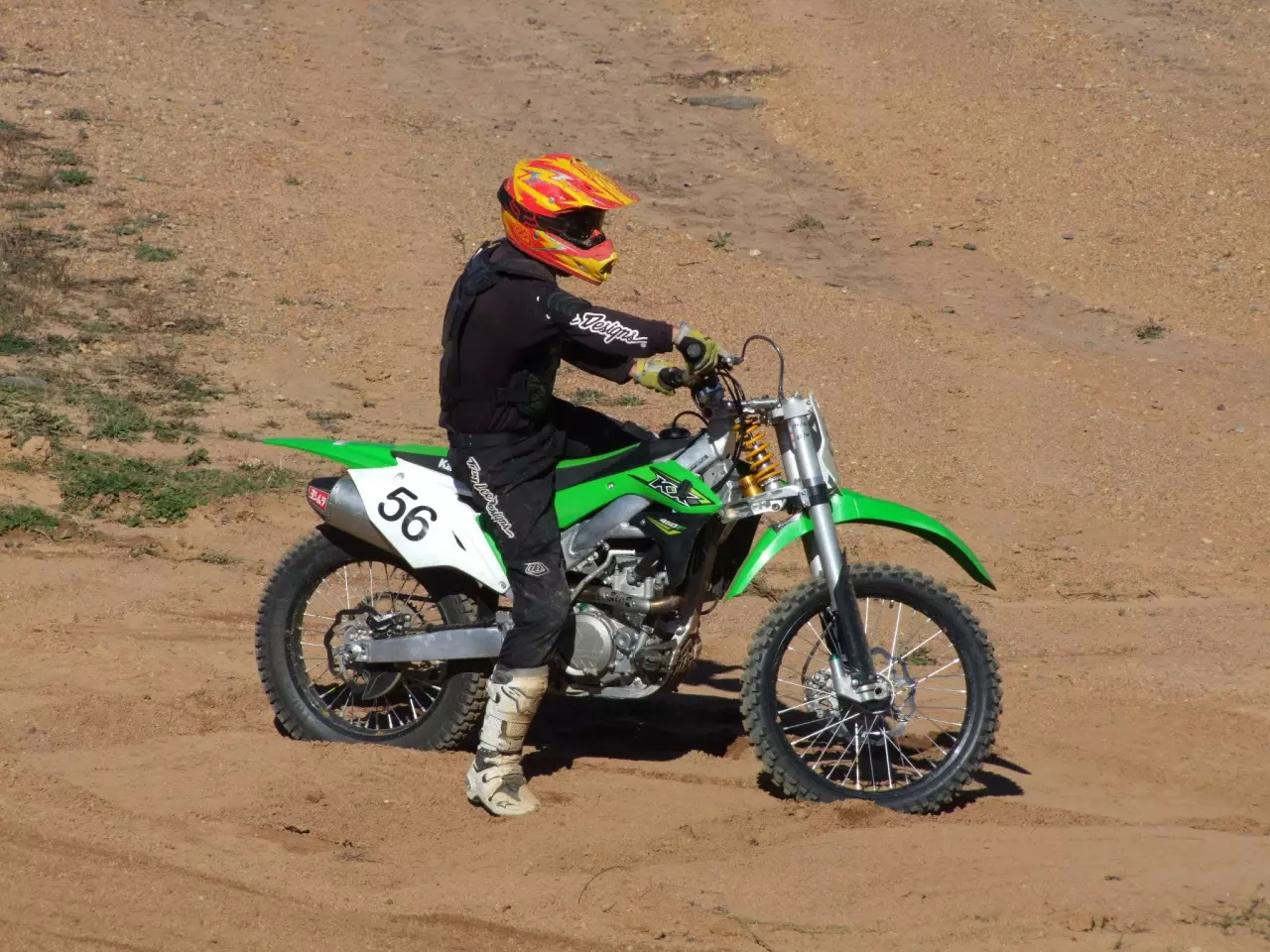Yes, that's a Kawasaki KX450F with a Hossack-style front end supporting a set of regular telescopic forks. Australian motorcycle suspension tuner Laurie "Suspension" Smith has created this confronting-looking jigger, claiming it makes for a better ride.
The TwoEvo suspension, as it's called, adds an extra layer of suspension to the bike's front end, suspending the triple clamps and steering axis that hold the bike's stock forks, and radically changing the angle of the forks. Where the standard bike offers 304.8 mm (12 in) of front wheel suspension travel, the TwoEvo system gives you 375 mm (14.8 in).
Because there are two suspension systems operating at once, and on different angles, the path of front wheel travel can be quite complex instead of more or less straight up and down like you'd get on a regular tele-forked bike, giving the bike a wider range of "ideal" bump shapes it can deal with.

Smith's theory is that the forks themselves might be more effective at handling the vertical component of bump handling at the steeper angle they're mounted on, as well as suffering from less dive under brakes, while the additional suspension does a better job with the horizontal component of the force.
In an interview with Australian Dirt Bike Magazine, Smith conceded that the system adds about 3 kg (6.6 lb) of weight to the bike, requires some pretty substantial frame modifications, adds potentially fragile complexity and gives the bike a "slightly odd look." It also adds significant complexity to the suspension tuning process, as the tuneable Fox shock on the head adds extra layers of adjustment possibilities to a complicated and dynamic system.
Still, when ADBM ride tester Mitch Lees took it for a ride, he was impressed with the overall feel of it, noting that "it made the small choppy bumps smoother and the big hits less harsh. It was incredible! The upright action of the fork helped it feel plush while the MTB shock allowed for superior stability like a normal bike at speed as if it was raked out. When braking it didn’t dive, which I knew it wouldn’t because of the rake angle but, to my surprise, it didn’t tuck. With a fork so upright I expected high-speed ruts to be a disaster but they weren’t."

Smith sees the system as something that would ideally find a home on an OEM bike, since an aftermarket kit or putting the system on bikes on an individual basis wouldn't be simple or cheap. But we applaud any effort to surpass the venerable telescopic fork, and this device, the result of several years of work, is a unique approach to the problem.
Source: Suspension Smith via Australian Dirt Bike Magazine










